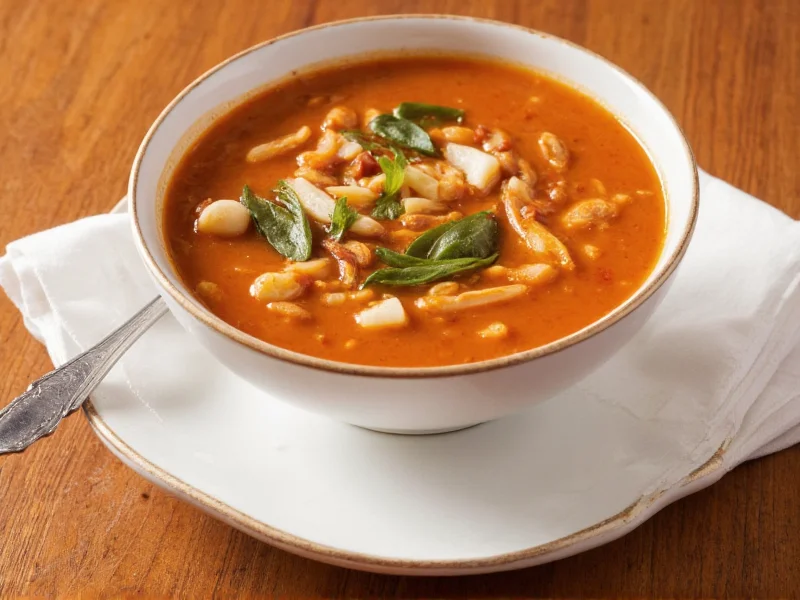Soup radish isn't a single botanical variety but rather describes specific radish types prized for soup preparation. The most authentic soup radish is black radish, known for its rough, dark skin and dense white flesh. When selecting soup radish for culinary use, look for firm, heavy specimens without soft spots. Properly stored in a cool, humid environment, they maintain freshness for 2-3 weeks.
Understanding Soup Radish Varieties
Many consumers confuse soup radish with other varieties. Black radish remains the traditional choice for European soups and stews, while daikon radish (often mistaken for soup radish) features prominently in Asian cuisine. The key difference lies in flavor profile and texture:
| Radish Type | Flavor Profile | Best Soup Applications |
|---|---|---|
| Black Radish (True Soup Radish) | Peppery when raw, sweetens when cooked | Beef stews, root vegetable broths, winter soups |
| Daikon Radish | Milder, slightly sweet | Miso soup, clear broths, Asian noodle soups |
| Red Globe Radish | Sharp, spicy | Not recommended for soups |
Culinary Properties and Benefits
Soup radish transforms during cooking, losing its raw sharpness while developing complex earthy notes. The enzymatic compounds responsible for its pungency break down with heat, creating a more rounded flavor profile that complements hearty broths. Chefs appreciate how soup radish maintains structural integrity during prolonged simmering unlike more delicate vegetables.
Nutritionally, soup radish offers significant advantages for health-conscious cooking. A single cup provides 29% of your daily vitamin C needs, supports digestive health through its fiber content, and contains compounds that may aid liver function. The glucosinolates in soup radish demonstrate antioxidant properties that survive cooking better than many other vegetables.
Practical Cooking Guidance
For optimal results when using soup radish in soups:
- Peel thoroughly before use - the skin can be bitter
- Cut into uniform 1-inch cubes for even cooking
- Add during the last 20-30 minutes of simmering
- Pair with complementary flavors like thyme, bay leaf, and root vegetables
- Balance with acidic elements like lemon juice to enhance flavor
When substituting soup radish in recipes, remember that daikon requires less cooking time while black radish needs longer to mellow. Never use common red radishes in soups - their texture breaks down completely and their flavor becomes unpleasantly sharp.
Seasonal Availability and Selection
Soup radish reaches peak quality during cooler months, typically from October through March. At farmers markets, look for specimens weighing 8-12 ounces with smooth, unblemished skin. Larger radishes often develop woody cores, while smaller ones provide more consistent texture. The best soup radish feels heavy for its size and produces a solid sound when tapped.
For home gardeners interested in growing soup radish, the 'Black Spanish Round' variety delivers reliable results with its 3-4 inch diameter roots ready for harvest in 50-60 days. Plant seeds directly in well-drained soil with full sun exposure for optimal development.
Simple Soup Radish Recipe
Try this classic Eastern European soup radish preparation that showcases its unique qualities:
- Peel and cube 2 large black radishes
- Sauté with 1 diced onion in 2 tbsp olive oil until golden
- Add 4 cups vegetable broth and simmer 25 minutes
- Stir in 1 cup cooked barley and fresh dill
- Finish with lemon zest and black pepper to taste
This preparation highlights how soup radish transforms from sharp to subtly sweet, creating a complex flavor base that elevates simple ingredients. The resulting soup provides both comforting warmth and significant nutritional benefits.
Frequently Asked Questions
Can I use daikon radish instead of soup radish in recipes?
Yes, but with adjustments. Daikon has a milder flavor and cooks faster than traditional black radish. Use 25% less cooking time and consider adding a pinch of mustard powder to replicate soup radish's characteristic depth. Daikon works well in clear broths but lacks the earthy complexity of black radish in hearty stews.
Why does my soup radish taste bitter in soup?
Bitterness typically comes from improper preparation. Always peel soup radish thoroughly as the skin contains bitter compounds. If bitterness persists, try parboiling cubes for 3-4 minutes before adding to your soup. Older or oversized radishes also develop more bitterness - select specimens under 4 inches in diameter for best results.
How should I store soup radish for maximum freshness?
Remove leafy tops immediately after purchase, as they draw moisture from the root. Store unwashed radishes in a perforated plastic bag within your refrigerator's crisper drawer. For extended storage, place in a container with damp sand or sawdust. Properly stored soup radish maintains quality for 3-4 weeks, significantly longer than most other radish varieties.
Does cooking soup radish reduce its nutritional value?
While some water-soluble vitamins decrease with cooking, soup radish retains most of its beneficial compounds. The heat actually increases bioavailability of certain antioxidants. For maximum nutrition, cook with minimal water and incorporate the cooking liquid into your soup. Steaming preserves more nutrients than boiling, but both methods maintain the fiber content that aids digestion.
What distinguishes soup radish from regular radishes in culinary applications?
Soup radish (typically black radish) has a denser texture that holds up during prolonged cooking, unlike common red radishes which become mushy. Its flavor profile transforms from sharp to sweet-earthy when cooked, while red radishes maintain unpleasant sharpness. Soup radish also contains higher concentrations of beneficial compounds that survive the cooking process, making it nutritionally superior for soups and stews.











 浙公网安备
33010002000092号
浙公网安备
33010002000092号 浙B2-20120091-4
浙B2-20120091-4